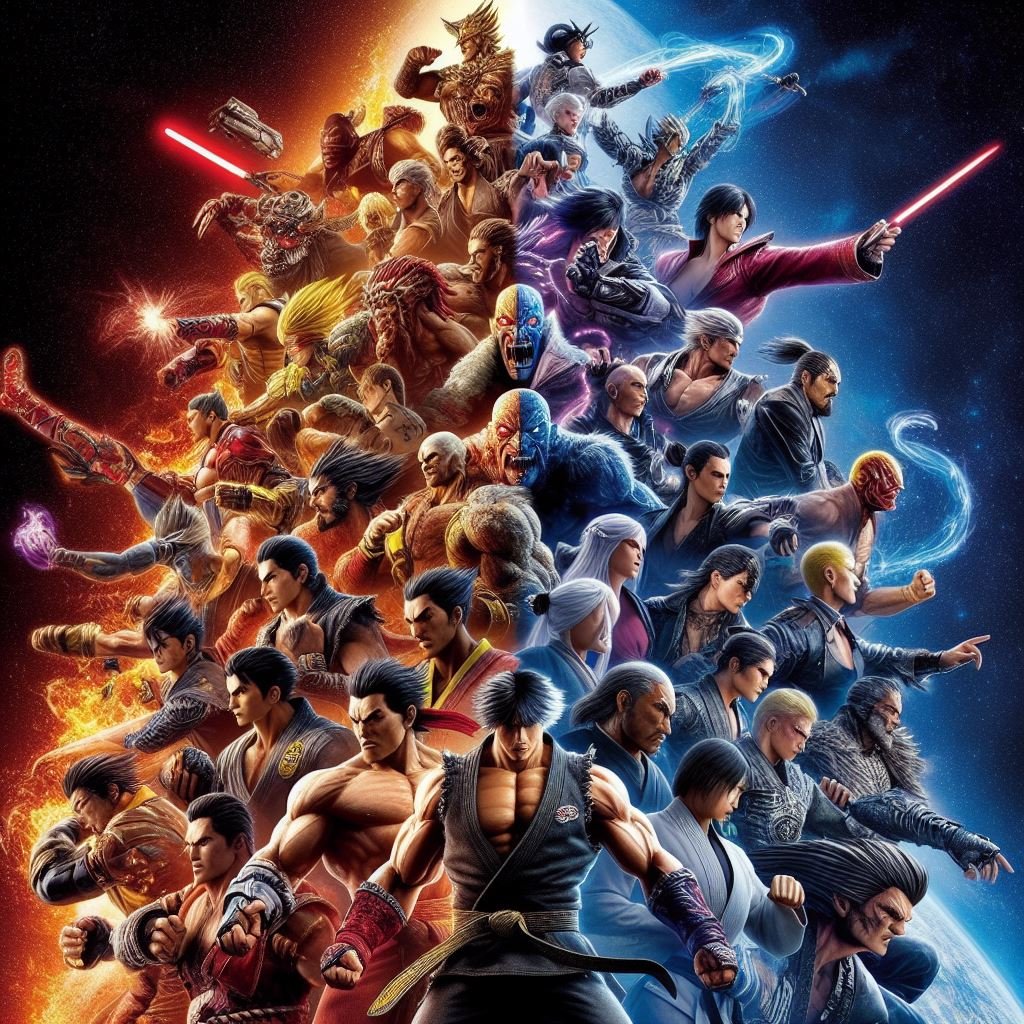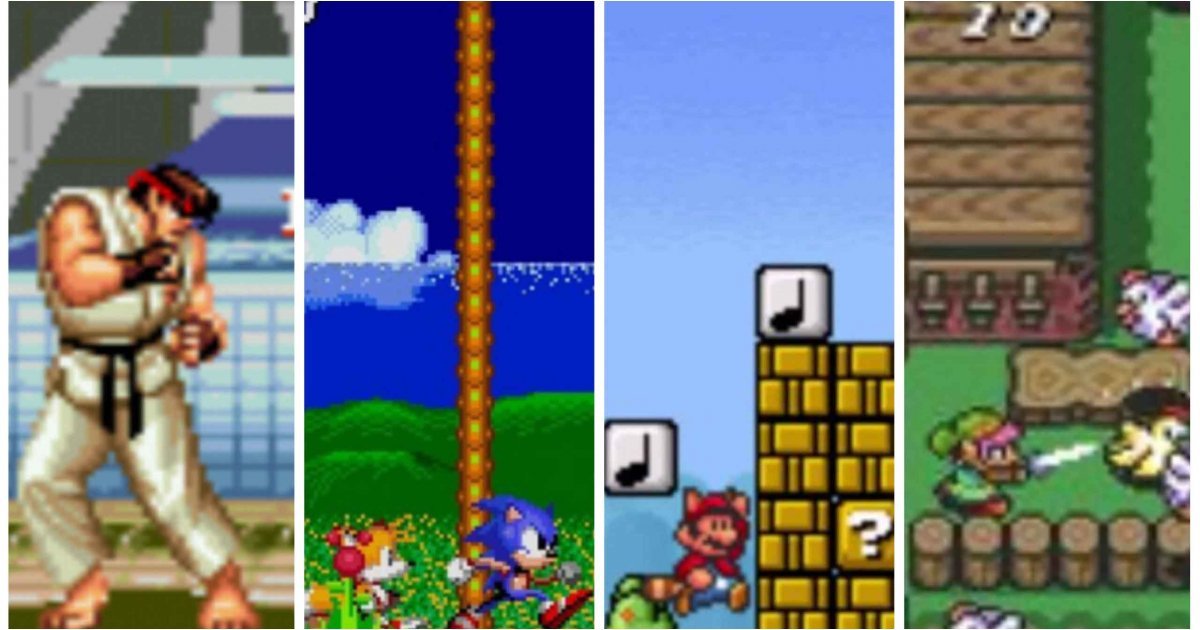Tekken, the iconic fighting game franchise, has been a staple in the gaming world since its inception in 1994. Over the years, it has evolved from a 2D fighter to a fully immersive 3D experience, captivating players with its intricate mechanics, diverse characters, and gripping narratives. Join us on a journey through the evolution of Tekken as we explore each version and upgrade in detail, while also addressing frequently asked questions that fans often ponder.
Chapter 1: The Origins of Tekken
Tekken (1994):
The original Tekken game marked the beginning of a legendary franchise. Developed by Namco, Tekken debuted in arcades, introducing players to a diverse cast of characters, each with their own unique fighting styles. Players were drawn to the game’s smooth controls, fluid animations, and revolutionary 3D graphics, setting a new standard for fighting games.
Tekken 2 (1995):
Building upon the success of its predecessor, Tekken 2 expanded the roster and introduced new characters such as Jun Kazama and Lei Wulong. The game further refined the gameplay mechanics, adding depth to the combat system and enhancing the overall experience for players.
Chapter 2: The Golden Age of Tekken
Tekken 3 (1997):
Considered by many as the golden age of Tekken, Tekken 3 took the series to new heights with its stunning visuals, expanded roster, and dynamic gameplay. The introduction of the Tekken Force mode provided players with an engaging single-player experience, while the addition of side-stepping added a new layer of strategy to battles.
Tekken Tag Tournament (1999):
Tekken Tag Tournament introduced the tag mechanic, allowing players to form teams of two fighters and switch between them during battles. This added a new dimension to gameplay, enabling players to devise creative strategies and combos using their chosen tag partners.
Chapter 3: Tekken Enters the Third Dimension
Tekken 4 (2001):
With Tekken 4, the series made the leap to fully 3D environments, introducing interactive stages and dynamic environments. The game also introduced new gameplay mechanics such as wall combos and uneven terrain, adding depth to the combat system.
Tekken 5 (2004):
Tekken 5 marked a return to form for the series, featuring refined gameplay mechanics, enhanced graphics, and an extensive story mode. The addition of interactive stages and destructible environments added a new layer of immersion to battles, while the introduction of new characters expanded the roster even further.
Chapter 4: Pushing Boundaries and Innovation
Tekken 6 (2007):
Tekken 6 continued to push boundaries with its expansive roster, innovative Scenario Campaign mode, and online multiplayer functionality. The game also introduced the Bound system, allowing for more extensive combo possibilities and dynamic gameplay.
Tekken Tag Tournament 2 (2011):
The sequel to the original Tag Tournament built upon its predecessor’s success, introducing new tag mechanics, characters, and customization options. With its robust roster and addictive gameplay, Tekken Tag Tournament 2 became a favorite among fans of the series.
Chapter 5: Tekken’s Next Generation
Tekken 7 (2015):
Tekken 7 represented the next generation of the franchise, boasting stunning graphics, refined gameplay mechanics, and the epic conclusion to the Mishima saga. The game introduced new characters, stages, and gameplay adjustments, revitalizing the series for both casual players and competitive enthusiasts.
Tekken 7: Fated Retribution (2016):
Fated Retribution served as an enhanced version of Tekken 7, introducing new characters, stages, and gameplay tweaks. With its continued support for the competitive scene and regular updates, Tekken 7: Fated Retribution remains a cornerstone of the fighting game community.
Chapter 6: Frequently Asked Questions (FAQs)
Q. What makes Tekken stand out among other fighting games?
Ans. Tekken’s intricate combat system, diverse roster of characters, and compelling storyline set it apart from other fighting games. The series’ commitment to innovation and gameplay balance has earned it a dedicated fanbase worldwide.
Q. How has the roster of characters evolved throughout the series?
Ans. Over the years, Tekken has introduced numerous characters, each with their own unique fighting styles and backstories. From classic favorites like Kazuya Mishima and Heihachi Mishima to newcomers like Jin Kazama and Asuka Kazama, the roster continues to expand with each new installment.
Q. What are some notable gameplay mechanics introduced in Tekken over the years?
Ans. Tekken has introduced several gameplay mechanics that have become synonymous with the series, including side-stepping, juggling, and the tag system. These mechanics add depth to battles and allow for a wide variety of strategies and playstyles.
Q. Are there any crossovers or collaborations involving Tekken?
Ans. Yes, Tekken has been involved in various crossovers and collaborations over the years, including guest characters from other franchises such as Street Fighter, Final Fantasy, and The Walking Dead. These crossovers add an extra layer of excitement for fans and showcase the versatility of the Tekken universe.
Q. How has Tekken contributed to the esports scene?
Ans. Tekken has played a significant role in the growth of the esports scene, with regular tournaments and events attracting top players from around the world. The series’ balanced gameplay and competitive depth make it a favorite among esports competitors and spectators alike.
Q. What is the significance of the Mishima saga in the Tekken storyline?
Ans. The Mishima saga serves as the central narrative arc of the Tekken series, revolving around the ongoing conflict between the Mishima family members. This storyline explores themes of power, betrayal, and redemption, adding depth to the series’ lore and character development.
Q. How does Tekken continue to innovate with each new installment?
Ans. Tekken continues to innovate by introducing new gameplay mechanics, characters, and modes with each new installment. The series’ commitment to quality and innovation ensures that each new game offers fresh experiences for both new and returning players.
Q. Are there any plans for future Tekken releases or updates?
Ans. While no official announcements have been made regarding future Tekken releases, fans can expect the series to continue evolving and expanding in the years to come. With its dedicated fanbase and rich history, Tekken remains a cornerstone of the fighting game genre.
Conclusion:
From its humble beginnings to its status as a global phenomenon, Tekken has undergone a remarkable evolution over the years. Each version and upgrade has contributed to the series’ enduring legacy, captivating players with its deep combat system, diverse characters, and immersive storytelling. As we look to the future, one thing remains certain: the legacy of Tekken will continue to inspire and entertain gamers for generations to come.


